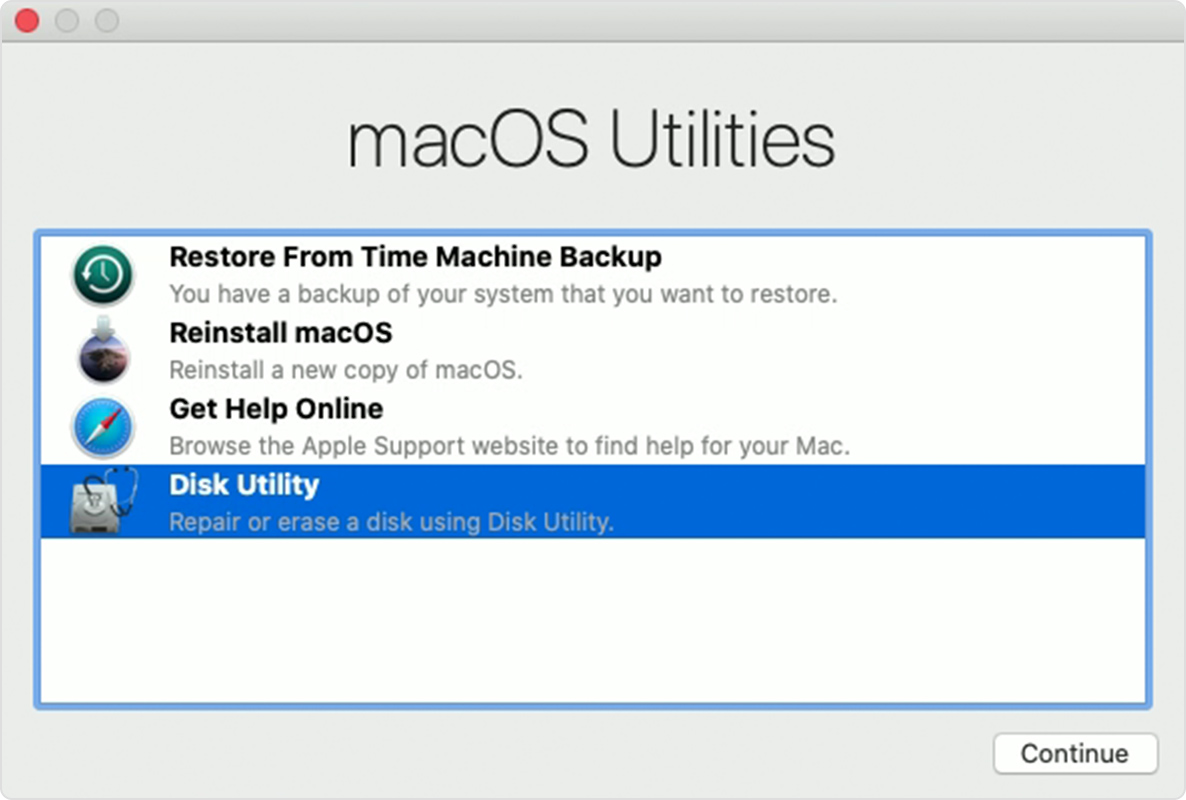
MAC OS RECOVERY IMAGE MAC
However, if none of your devices (MacBook, MacBook Air, MacBook Pro, iMac, Mac Pro, or Mac Mini) are not working when you need them the most, you can use a Windows computer to rescue your Apple device. This is one of the main reasons you should consider creating a macOS bootable USB when your computer is working correctly. If the unexpected happens with an Apple computer, you can use a macOS bootable USB with the installation media to repair it. It’s a matter of time until the device refuses to start, which could happen for many reasons, including (and not limited to) file corruption, hardware failure, or buggy update. Not every question will be answered, we don’t reply to email, and we cannot provide direct troubleshooting advice.It doesn’t matter whether you use macOS, Windows 11, or Windows 10.
MAC OS RECOVERY IMAGE FULL
If not, we’re always looking for new problems to solve! Email yours to including screen captures as appropriate and whether you want your full name used. We’ve compiled a list of the questions we get asked most frequently, along with answers and links to columns: read our super FAQ to see if your question is covered. This Mac 911 article is in response to a question submitted by Macworld reader Julio.
MAC OS RECOVERY IMAGE PASSWORD
Select the option “My password doesn’t work when logging in” and click Next, then follow the remaining steps.

iCloud escrow: If you chose to store your key in iCloud during FileVault setup, the sentence above continues, ellipsis and all, “…reset it using your Apple ID.” Click the right-pointing arrow and follow the steps provided to log into the iCloud account associated with this Mac.( Read our explanation about how T2 and M1 Macs interact with FileVault.) Intel Macs with a T2 Security Chip and on all M1 Apple silicon Macs always encrypt this data.

For Intel Macs without a T2 Security Chip, FileVault also encrypts the contents of the startup volume’s data when the computer is powered down. Only after the login does macOS enter its normal operation mode. That’s a dangerous situation if someone has physical access to your computer–in your home or office or because they’ve stolen it–they might be able to employ known and not-yet-discovered methods to bypass the login and access the drive’s contents.įileVault on all Macs puts an additional bar in place: your startup volume (or, as in the case with macOS Catalina and later, the startup data volume) is encrypted and its files are unavailable unless and until there’s been a successful macOS login. With FileVault disabled, the data on that volume is effectively just one password away between an attacker and your files. FileVault hardens macOS by wrapping a layer of login protection around the part of the startup volume that holds your files and other data.


 0 kommentar(er)
0 kommentar(er)
